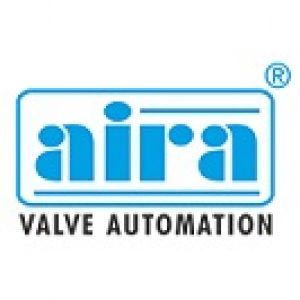Pneumatic Actuator: Improving Industrial AutomationPosted by Aira Euro on April 15th, 2024  Introduction to Pneumatic ActuatorsPneumatic actuators play a crucial role in various industries, offering efficient and reliable motion control solutions. These devices harness the power of compressed air to generate mechanical motion, making them indispensable in automation systems worldwide. Types of Pneumatic ActuatorsPneumatic actuators come in two main types: linear and rotary. Linear actuators convert air pressure into linear motion, while rotary actuators translate it into rotational movement. Each type has its unique applications and advantages. Working Principle of Pneumatic ActuatorsThe working principle of pneumatic actuators is relatively simple yet effective. When compressed air is introduced into the actuator, it applies force to a piston or diaphragm, causing it to move. This motion is then transferred to the connected load, enabling precise control of position or torque. Advantages of Pneumatic ActuatorsPneumatic actuators have several advantages over other types of actuators. They are known for their speed, responsiveness, and simplicity of design. Additionally, pneumatic systems are inherently safe, making them suitable for use in various industrial environments. Disadvantages of Pneumatic ActuatorsDespite their numerous benefits, pneumatic actuators also have some limitations. They typically provide lower force output compared to hydraulic or electric actuators and require a constant source of compressed air. Moreover, pneumatic systems can be prone to contamination, affecting their performance and reliability. Applications of Pneumatic ActuatorsPneumatic actuators find applications in diverse industries, including manufacturing, automotive, and aerospace. They are commonly used in robotics, conveyor systems, and valve control applications, where fast and precise motion is essential for optimal performance. Choosing the Right Pneumatic ActuatorSelecting the appropriate pneumatic actuator depends on various factors, such as the application requirements, operating environment, and budget constraints. Engineers must consider parameters like force, speed, and duty cycle to ensure optimal performance and reliability. Maintenance and TroubleshootingProper maintenance is essential to ensure the longevity and efficiency of pneumatic actuators. Regular inspection, lubrication, and cleaning help prevent premature wear and downtime. Additionally, troubleshooting common issues, such as leaks or malfunctions, requires a systematic approach to identify and rectify the root cause. Future Trends in Pneumatic ActuatorsThe future of pneumatic actuators lies in integration with emerging technologies such as the Internet of Things (IoT) and Industry 4.0. Manufacturers are exploring innovative materials and design concepts to enhance performance, efficiency, and connectivity, paving the way for smarter and more versatile pneumatic systems. ConclusionIn conclusion, pneumatic actuators are indispensable components of modern automation systems, offering fast, reliable, and cost-effective motion control solutions. Despite their limitations, advances in technology continue to expand their applications and improve their performance, ensuring their relevance in the ever-evolving industrial landscape. Like it? Share it!More by this author |


